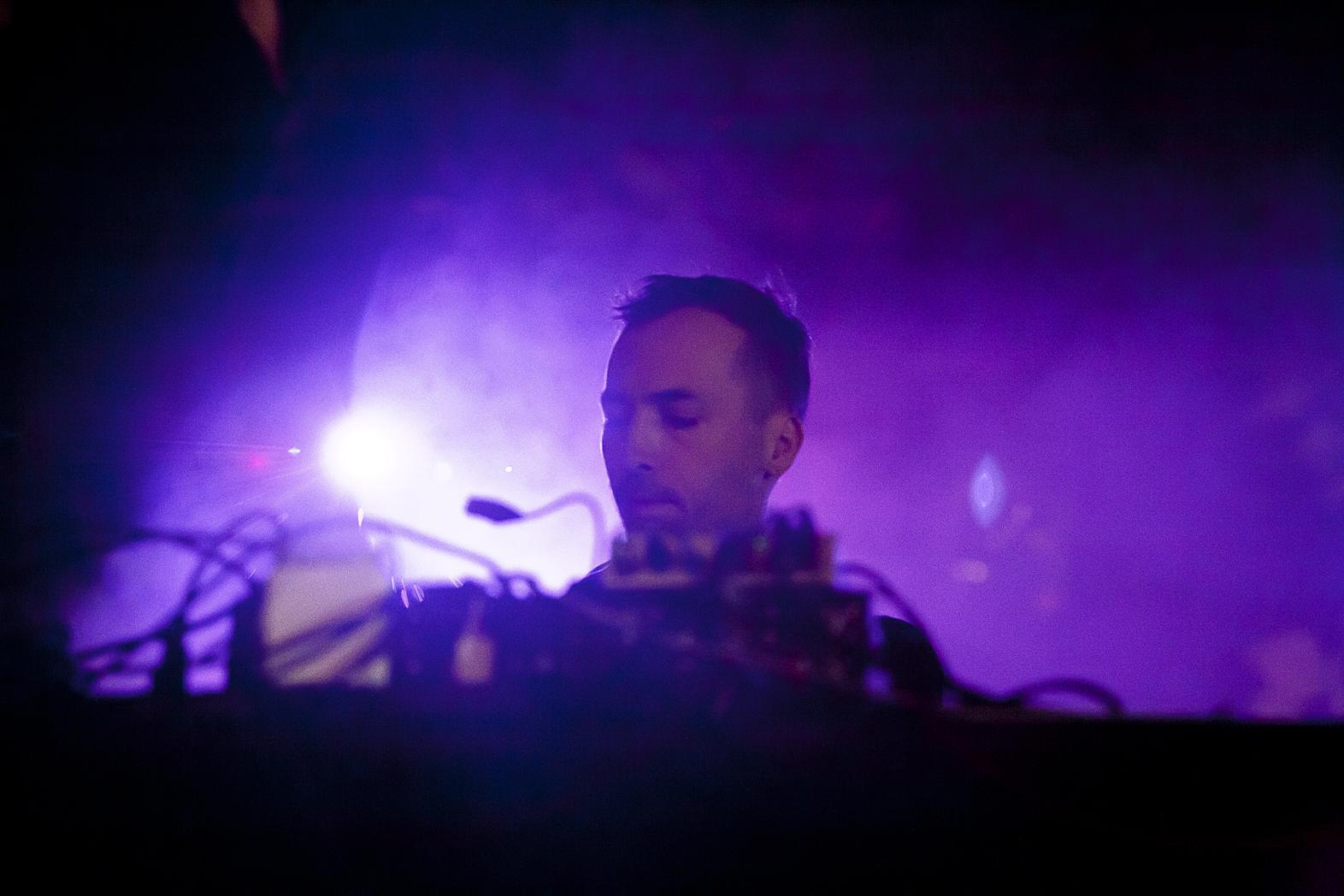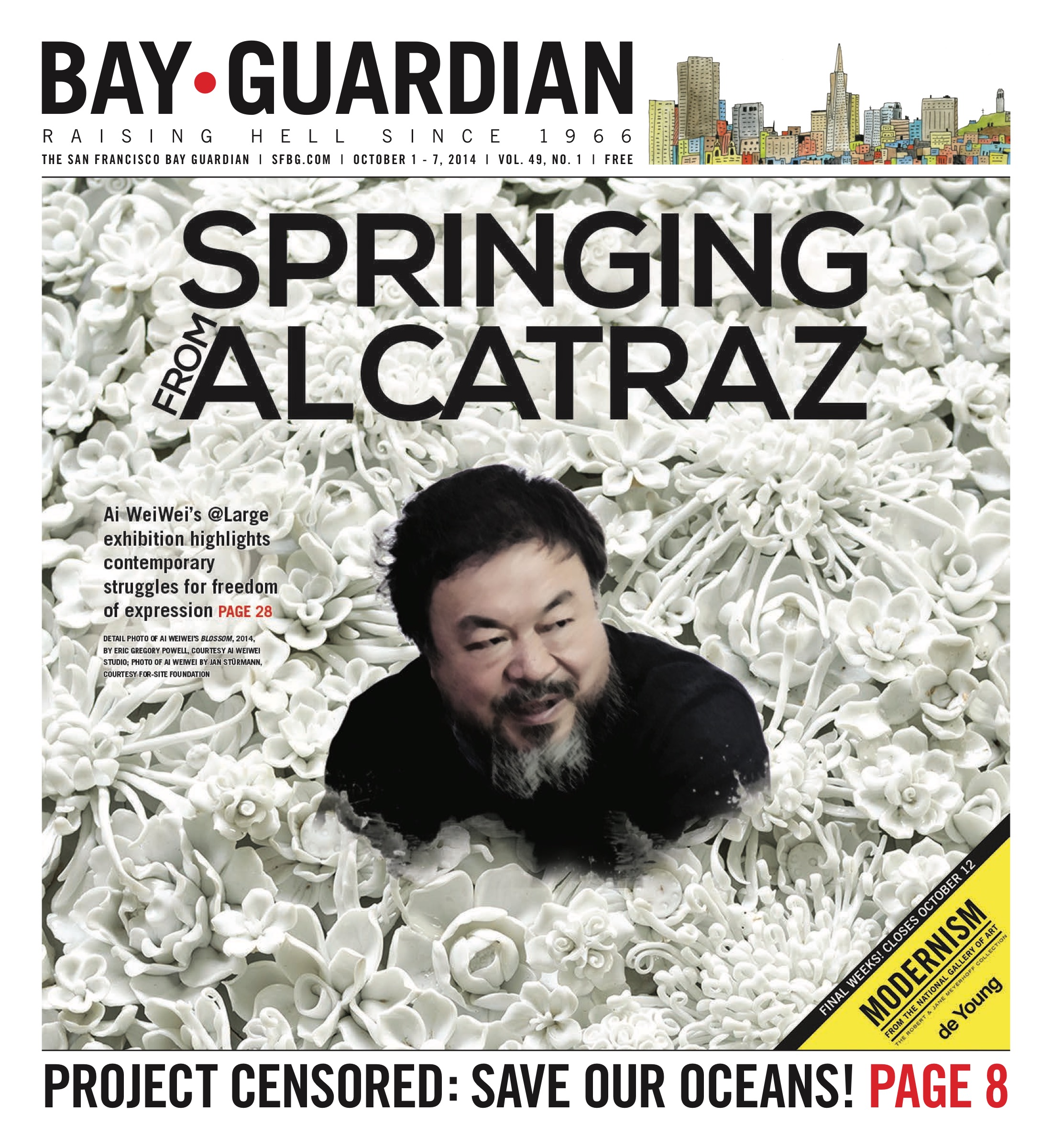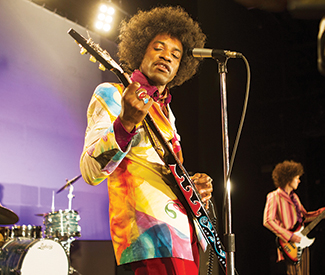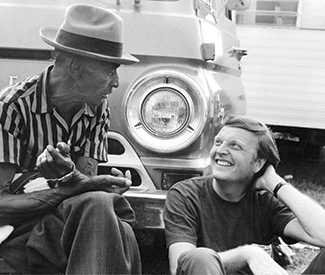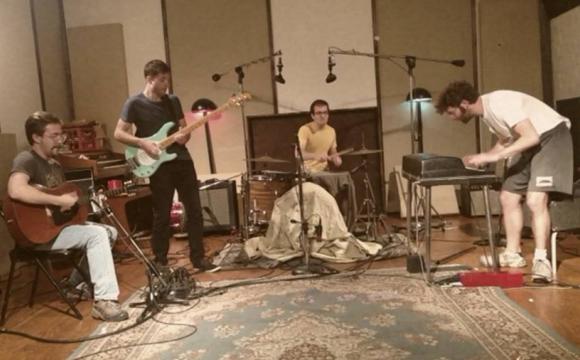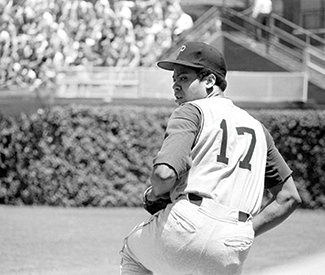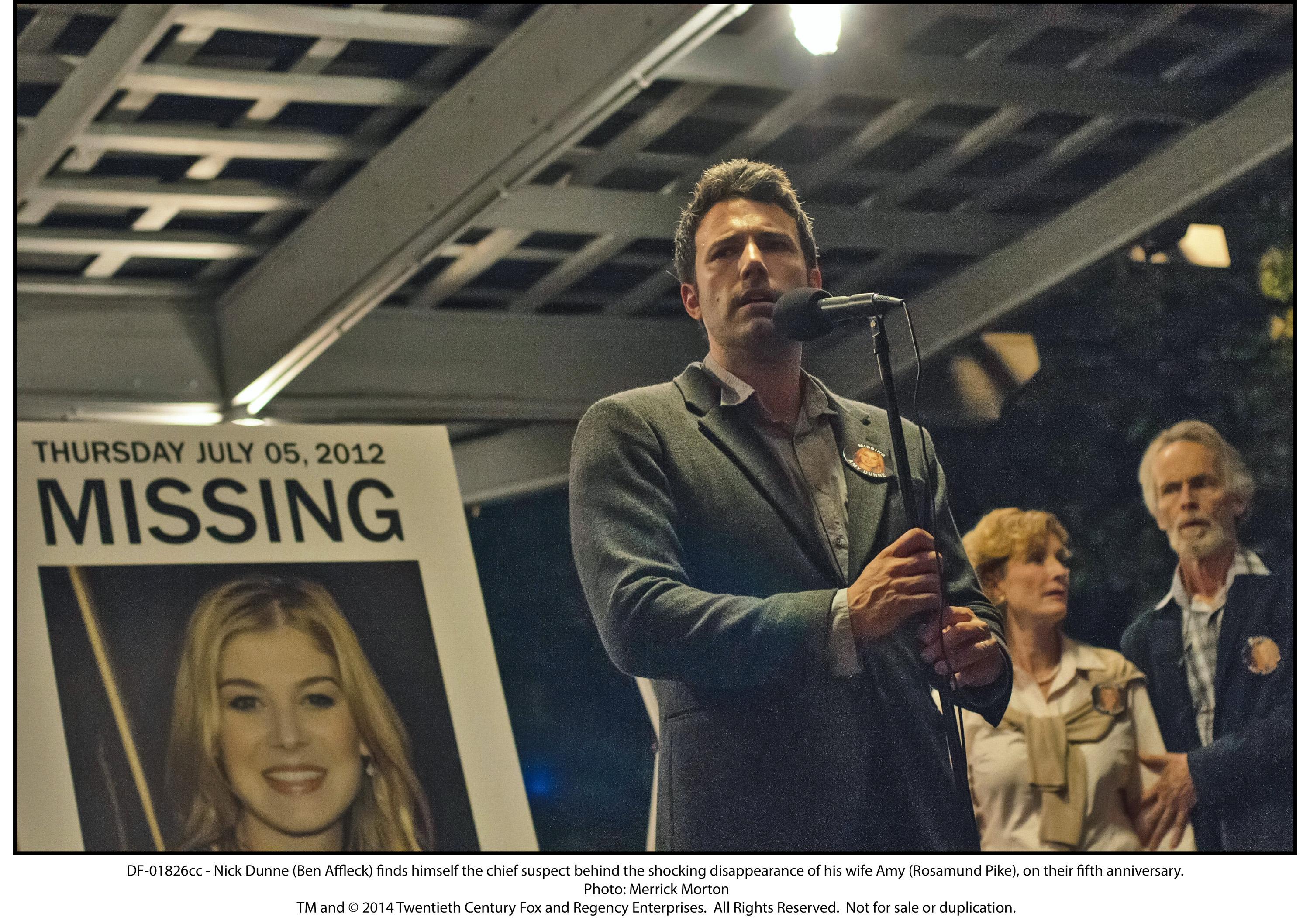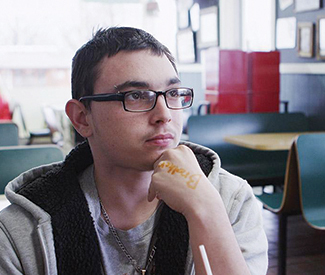Film listings are edited by Cheryl Eddy. Reviewers are Kimberly Chun, Dennis Harvey, Lynn Rapoport, and Sara Maria Vizcarrondo. For rep house showtimes, see Rep Clock.
OPENING
Advanced Style Many successful blogs have been turned into books, but few make the leap to film. Street-style photographer Ari Seth Cohen’s online album of fashionable elders translates well to the big screen, as without exception all of the women featured in Lina Plioplyte’s doc are vivacious, quotable (“I’m an artist, and my art is dressing!” “Good style improves the view for everybody!”), and — obviously — wonderfully, uniquely put together. Although at least one subject, 80-year-old Joyce, is wealthy (witness her to-die-for vintage Chanel purse collection), the rest of the women eschew designer for the most part; one owns a vintage store (“Sometimes I’m building an outfit for seven years!”), one owns a boutique (“You either have it, or you don’t … but you can learn it!”), and others are artists, including a former Apollo theater dancer. All are close with Cohen, an access point that allows Advanced Style to dig beyond fabulous hats and into end-of-life issues, including health concerns among the women and their aging spouses. But mostly, this is an upbeat, inspiring look at women who are embracing their later years — and looking rather fab doing it. (1:12) Elmwood, Presidio. (Eddy)
Alexander and the Terrible, Horrible, No Good, Very Bad Day In this Disney comedy based on the Judith Viorst children’s book, Steve Carell and Jennifer Garner star as parents to an 11-year-old struggling through, well, see title. (1:22) Marina.
Björk: Biophilia Live Those who saw one of Björk’s mind-boggling, futuristic spaceshows for her most recent full-length Biophilia — performed at only a handful of intimate venues around the world — know the specialness of that experience. At the shows, Björk, everyone’s favorite chirping Icelandic wood-fairy, stood on relatively diminutive stages surrounded by a chilling blonde choir while a Tesla coil vibrated electric shocks of purple lightning. Now those who missed out on these very-special-Björk-moments have the luxury of viewing the full show with concert film Bjork: Biophilia Live. The album was heavily based around imaginative musical apps created for it, making the film an interactive experience as well (play along at home!) The film showcases the complete experience of Biophilia, which touches on nature, music, and technology, during Björk’s showing at London’s Alexandra Palace in 2013. While it would have been nice to see a few behind-the-scenes moments, Biophilia Live still brings up close rushes of electrifying sounds, glittering visuals, and a poufy red-orange cotton candy wig floating delicately above Bjork’s cherubic face. (1:37) Roxie. (Emily Savage)
Dead Snow 2: Red vs. Dead Beginning moments after the events of the original 2009 Dead Snow, Tommy Wirkola’s sequel has that film’s sole survivor, Martin (Vegar Hoel), fleeing the resurrected Nazi invaders who laid waste to his seven fellow med school students on their holiday weekend. Crashing his car en route, he wakes up in the hospital, where there’s some good news — he’s alive — but also plenty of bad. For one thing, the infected arm he sawed off to escape zombie-bite infection has been replaced; that would be good, if he weren’t now the bearer of an arm belonging to none other than the nefarious Col. Herzog (Orjan Gamst); naturally, the limb has a malevolent mind of its own. Plus, the authorities laugh off his story of undead Nazi attackers, naturally assuming that he killed his friends himself. Worse still, Martin figures out that Herzog and company won’t stop killing (and “turning”) the living until they’ve conquered a sleepy town some miles away — thus completing their direct orders from Hitler 70 years ago. The first film took its time revealing the outrageous premise, poking along as a conventional slasher until turning into an increasingly berserk, hilarious black comedy midway. This follow-up makes an all-too-predictable mistake: It starts out at “over-the-top,” leaving the movie nowhere to go but further into slapstick gore and bad-taste jokes, all scaled bigger but just half as funny as before. (There’s also the really dismal addition of three zombie-obsessed American nerds, additional “comedy relief” presumably aimed at US audiences — but I’m not sure even a Norwegian could find these asinine cartoons amusing.) Dead Snow 2 has high energy and some laughs, but if you haven’t seen the original, that’s the place to start — and perhaps to end. (1:40) Roxie. (Harvey)
The Disappearance of Eleanor Rigby: Her/Him The combined version, Them, was released earlier this fall; now, the individual films exploring a marriage in shreds arrive in theaters. Jessica Chastain and James McAvoy star. (3:19) Embarcadero.
Dracula Untold Before he was Dracula, he was just plain ol’ Vlad Tepes. Luke Evans (The Hobbit series) stars as vampire patient zero in this action-fantasy-horror flick. (1:32)
The Green Prince Nadav Schirman’s Sundance Film Festival audience award winner (and SF Jewish Film Festival opening night film) should make an impression well beyond the fest circuit; it’s edited and scored like a thriller, surging ahead with constant tension despite the fact that most of the movie consists of the same two talking heads. But what subjects: Palestinian Mosab Hassan Yousef, oldest son of a Hamas leader, and Shin Bet agent Gonen Ben Yitzhak, the man who recruited Mosab to spy on behalf of Israel. How this relationship came to be, the sensitive information it yielded, the incredible risks both men took, and how Mosab eventually ended up living in the United States and sharing his tale — for so long, a life-or-death secret — with the world, is an undeniably gripping tale of loyalty, trust, and a most unlikely friendship. (1:41) Opera Plaza, Shattuck. (Eddy)
The Guest See “Go for Goth.” (1:39)
The Judge Crackling chemistry between Robert Downey, Jr. (as Hank, a hotshot Chicago lawyer who reluctantly returns to his rural hometown after the death of his mother) and Robert Duvall (as the stern title character, Hank’s long-estranged father, Joseph) elevates this otherwise heavy-handed look at a dysfunctional family forced to pull together when Joseph is arrested for murder. The rest of the cast in this more mature departure for director David Dobkin (2005’s The Wedding Crashers) ain’t bad, either; there’s Vincent D’Onofrio as Hank’s seething older brother; Vera Farmiga as Sam, the high school sweetheart Hank left behind; and Billy Bob Thornton as a gimlet-eyed prosecutor with an ax to grind. At two hours and 20 minutes, there’s a lot of opportunity for sentimentality, including a recurring narrative device of using home movies — a treasured hobby of Hank’s younger brother, Dale (Jeremy Strong), unfortunately scripted as a “childlike,” vaguely autistic type — to remind us The Way We Were When Things Were Good. And as if the drama of a murder trial wasn’t enough, there’s also Hank’s tentative reconciliation with Sam, relationship-building efforts with his own wee daughter (Emma Tremblay), a tornado, etc. etc. If The Judge tries to be too many genres at once (see also: Cameron Crowe’s lesser filmography), at least it has those marvelously acted Downey vs. Duvall tête-à-têtes — as well as one memorably hilarious jury-selection scene. For an interview with Dobkin, visit www.sfbg.com/pixel_vision. (2:21) Four Star, Marina. (Eddy)
Kill the Messenger Based partly on former San Jose Mercury News investigative reporter Gary Webb’s 1998 book, Dark Alliance, and partly on a posthumous 2004 biography of Webb written by SoCal reporter Nick Schou (from which the film takes its title), Kill the Messenger recounts a grim tale of single-minded muckraking, professional betrayal, and how the federal government’s dubious War on Drugs took an extra-grim turn during the Reagan administration. As the film opens, Webb (Jeremy Renner) is working for the Mercury News, having moved to the Bay Area with his wife (Rosemarie DeWitt) and three kids after some marital trouble back east. In the course of covering a drug dealer’s trial, he gets tipped to a story connecting the CIA, the US funding of the contras in Nicaragua, and the crack cocaine that began pouring into Los Angeles and other American cities in the mid-1980s. Michael Cuesta, who since his directorial debut with L.I.E. in 2001 has been mainly working in television (Homeland, Six Feet Under), attempts to combine an All the President’s Men-style journalistic crime procedural with a portrait of the man who broke the story and was in turn broken by it — or rather, by the CIA and the mainstream press, which turns on him with the vengeance, it’s implied, of a handful of prestigious papers of record that got majorly scooped. The portrait, with Renner giving a nuanced, painfully sympathetic performance, comes out better than the procedural, which feels blurry in places from the speed of the discoveries. (1:52) Shattuck. (Rapoport)
Kite Based on Yasuomi Umetsu’s cult anime, known for its fetishy sex and violence involving a young girl assassin with a penchant for traditional Japanese school uniforms, South Africa-set sci-fi action indie Kite begins with a bang — and a hail of bone fragments and gray matter splatter when an explosive bullet connects with a baddie’s skull. Set in the dystopic near future, after a global financial meltdown, Kite picks up in the middle of an all-too-familiar seedy scenario: an out-of-it teen hooker in a body-con mini and neon wig is getting dragged into the elevator by a trashy sleazebag. His unnecessary cruelty to an elderly lady sharing their lift forces the damsel to break cover and unleash those exploding bullets. It turn out Sawa (India Eisley) is far from your traditional hapless victim — rather she’s a brutal assassin out to avenge her parents’ murders and jumped up on a military drug designed to dull the pain and memories related to PTSD, administered oh so helpfully by her father’s old law-enforcement partner Aker (Samuel L. Jackson). The catch: a mystery man (Callan McAuliffe) who threatens to disrupt the smooth flow of bloody mayhem with his promise to dredge up Sawa’s past. Kite‘s acting talent — in particular Eisley and Jackson — and cinematographer Lance Gewer do what they can, painting the screen with lurid hues and just as over-the-top emotive moments, with pulpy material that’s high on the ultra violence (and salacious kicks for those into little girls with guns) but low on originality. (1:30) Presidio. (Chun)
One Chance Dramedy about the unlikely rise of Britain’s Got Talent breakout Paul Potts (played by James Corden, who just replaced Craig Ferguson as host of The Late Late Show). (1:43)
The Two Faces of January See “Con and On.” (1:38) Embarcadero, Shattuck.
ONGOING
Abuse of Weakness Those who last saw Isabelle Huppert as a dutiful daughter in 2012’s Amour will be both thrilled and piqued to see the tables turned so remarkably in Catherine Breillat’s Abuse of Weakness. Huppert gives an unapologetic, stunning tour de force performance in what appears to be a story torn from the filmmaker’s own life, when Breillat suffered a series of strokes in the ’00s and ended up entangled in a loving and predatory friendship with con man Christophe Rocancourt. Here, moviemaker and writer Maud (Huppert) is particularly vulnerable when she meets celebrity criminal and best-selling writer Vilko (Kool Shen). She is determined to have him star in her next film, despite the protestations of friends and family, and he helps her in return — by simply helping her get around and giving her focus when half her body seems beyond her control, while his constant machinations continue to compel her. Crafting a layered, resonant response to what seems like an otherwise clear-cut case of abuse, Breillat seems to have gotten something close to one of her best films out of the sorry situation, while Huppert reminds us — with the painful precision of this intensely physical role — why she’s one of France’s finest. (1:45) Roxie. (Chun)
Annabelle The Conjuring was a big hit last summer, thanks to its scares (the clapping game!) and its unusually thoughtful themes of motherhood, further elevated by the casting of Vera Farmiga and Lili Taylor. The one thing the story didn’t have was sequel potential — ergo, this cheapy spin-off prequel delving into the back story of a haunted doll that was only tangential to the original film’s action. Set in 1970, Annabelle begins with TV footage of the Manson murders as heavily pregnant Sharon Tate look-alike Mia — yes, just like that actress who played Rosemary! Except this actress is, weirdly, named Annabelle Wallis — stitches clothes for her impending arrival. Hubby John (bland Ward Horton) is a doctor and is never home, even going on work trips after the film’s first-act home-invasion by Satanists who curse guess-which-toy. After the baby’s born, straaaange things start to happen, and the sinister pranks become more menacing when the family moves into the gloomiest apartment building in Pasadena. As a soul-hungry demon circles closer, Annabelle hopes we’re chilled enough to ignore blatant rip-offs not just of Rosemary’s Baby (1968) but also 1979’s Amityville Horror and the ghosts of other schlocky devil flicks that’ve come before. The only thing about Annabelle that might keep you up at night: What is the otherwise respectable Alfre Woodard — cast as a confusingly motivated bookstore owner — doing in this forgettable misfire? (1:39) Metreon, 1000 Van Ness. (Eddy)
Art and Craft Fans of docs that can be summed up with the phrase “I can’t believe that shit really happened” are in for a treat with Art and Craft, which boasts an eccentric subject who allows filmmakers Sam Cullman, Jennifer Grausman, and Mark Becker full access yet remains entirely inscrutable. He is art forger Mark Landis, diagnosed as schizophrenic after a teenage nervous breakdown, now in his 50s, in fragile health, and living in his late mother’s Mississippi apartment. For 30-plus years, his illness has manifested in an obsession with recreating artworks with remarkable accuracy (Dr. Seuss, Picasso, you name it) — and then arranging elaborate scenarios (an inheritance, the passing of a nonexistent sister, situations that require him to dress as a priest) that involve donating the fakes (to 46 museums in 20 states, most delighted to benefit from his philanthropy). He’s not in it for the money, so the FBI merely observes his exploits, leaving the legwork to former Cleveland Art Museum employee Matt Leininger, who after realizing the deception at his own institution becomes consumed with uncovering Landis’ trail of phony brush strokes. This cat-and-mouse tale (in which the mouse is completely on his own astral plane of reality) leads up to one of the most awkward gallery openings ever captured on film — with artwork as beautifully created as it is plagiarized and deliberately misrepresented. (1:29) Opera Plaza. (Eddy)
The Boxtrolls (1:37) Balboa, Metreon, 1000 Van Ness.
Boyhood Believe the hype: Richard Linklater’s Boyhood is one of the best films of the year. It’d be a towering cinematic accomplishment in any year. By now, you’ve heard the set-up, which borrows elements from Linklater’s Before films, as well as his coming-of-age dramas (1993’s Dazed and Confused in particular). He filmed his cast — including titular youth Ellar Coltrane, Lorelai Linklater as his older sister, and Patricia Arquette and Ethan Hawke as his divorced parents, on and off over 12 years — with scenes touching on moments both monumental (high-tension moments with ugly stepfathers) and microscopic (the creation of a perfect campfire s’more). The years flow by, signaled not by any obvious gestures like on-screen text, but by changing hairstyles, pop culture references, and evolving video-game consoles. Watching Coltrane’s Mason grow from arrowhead-obsessed tyke to thoughtful college freshman is a rare and remarkable pleasure; among the more experienced actors, Arquette is particularly moving as a fiercely loving single mom determined to advance in her career despite continual, mountain-sized roadblocks in her personal life. (2:40) Balboa, Embarcadero, 1000 Van Ness, Sundance Kabuki. (Eddy)
Brush With Danger (1:30) 1000 Van Ness.
Dolphin Tale 2 (1:48) Metreon.
The Drop The late James Gandolfini gets a fitting final feature-film sendoff in this edgy microcosm of a crime movie, set among the small-time hoodies of Brooklyn, but just easily recast in Tony Soprano’s Jersey or the Beantown of 2010’s The Fighter. As Cousin Marv, a onetime dive-bar owner forced to turn his watering hole over to Chechen mobsters as a drop spot for bookmaking loot, he also gets worthy sparring partners in Tom Hardy and Matthias Schoenaerts (star of 2011’s Bullhead, director Michaël R. Roskam’s Oscar-nominated breakout). Hardy’s Bob looks to be the perpetual side guy to his Cousin Marv; he seems sludgy and lacking confidence, until he finds a battered pit bull puppy in a trashcan belonging to Nadia (Noomi Rapace) — and discovers himself in the middle of a brazen robbery at the drop bar. With the puppy and Nadia comes the canine’s purported owner, rumored killer, and neighborhood “nut case” Eric (Schoenaerts). The beauty of Dennis Lehane’s screenplay, spinning off his short story “Animal Rescue,” is embedded in how the most banal niceties (like “Good to see you”) are used with Mamet-like skill to signal the threadbare facade of civilized behavior and convey an almost nihilistic sense of imminent threat. Meanwhile, Roskam walks a tightrope between the drab, wintry everyday and a pervasive mood of menace, creating a downbeat yet almost horrifying effect when the trigger is finally pulled — and the veil between the hidden and the real, the animal and the human, is dropped. (1:45) Metreon, 1000 Van Ness, Sundance Kabuki. (Chun)
The Equalizer In this big-screen reboot of the 1980s TV series — which starred Brit Edward Woodward as Robert McCall, a former secret agent who’s since devoted himself to helping “people in need” — man-with-a-past Bob (Denzel Washington) lives his days of quiet desperation working for a Home Depot-like store. He spends his insomniac nights in the local 24-hour diner, sharing sympathies with juvenile hooker Toni (Chloë Grace Moretz). When Toni’s pimp beats her up, Bob tries to buy her freedom, but instead starts a bloodbath that attracts the attentions of a mafioso (Martin Csokas). When Toni calls Bob “Robert” you expect them to bond, but that’s not what director Antoine Fuqua (2001’s Training Day) has in mind — he’s aiming for shared vulnerability, and it’s the quality that unites everyone in this corrupt segment of Boston. Hollywood has long looked for a character to simultaneously please grown-ups and the hero-hungry young-dude demographic, and while this origin story leaves a taste of ham in your mouth, it’s a great way to bridge the divide. I’d happily watch The Equalizer 2 and frankly hope they make one. (2:08) Metreon, 1000 Van Ness, Sundance Kabuki. (Vizcarrondo)
Gone Girl Gillian Flynn’s twisted 2012 tome — about a marriage about to implode at its five-year mark; the American media’s obsession with missing white women; and the wide-ranging effects of our shitty economy; not to mention a killer reminder of why the unreliable narrator is such a tasty literary device — gets the best possible big-screen scenario, with David Fincher directing (along with his usual A+ crew, including cinematographer Jeff Cronenweth and composers Trent Reznor and Atticus Ross), Flynn herself penning the screenplay, and an A-list cast. If Gone Girl the film comes up short in translating the book’s deliberately mind-fucking story structure, which explores the action from two distinct points of view, it succeeds in other ways, visually capturing the beige, airless, McMansions-with-overgrown-yards life of Nick (Ben Affleck) and Amy (Rosamund Pike) Dunne, forced to move to his Missouri hometown after losing their NYC writing jobs. There, they proceed to wallow in separate but mutual misery until Amy goes missing, and we get a front-row seat as the shit hits the fan in many different ways. Affleck (Flynn’s top choice) and Pike are well-cast, with Kim Dickens (as the no-nonsense detective investigating Amy’s disappearance) making the biggest impression among a large supporting cast. (2:25) 1000 Van Ness, Presidio, SF Centre, Vogue. (Eddy)
Guardians of the Galaxy The trailer that nearly broke the internet didn’t lie: Guardians of the Galaxy is cheeky, hilarious, eye-popping fun. Its plot may be a predictable anti-hero’s journey, but the saga of Peter “Star-Lord” Quill (Chris Pratt), half-Earthling, half maybe-alien, as he transforms from scavenging scoundrel to rescuer-of-the-universe is so enjoyable nobody seeking a good time at the movies will care. Helping Quill in his battle against baddie Ronan (Lee Pace) are slinky, green-skinned Gamora (Zoe Saldana); rascally raccoon Rocket (voiced by Bradley Cooper); muscle-bound dim bulb Drax (former pro wrestler Dave Bautista); and a tree-like creature named Groot (voiced by Vin Diesel — his best performance in years, if ever, despite the fact that the only words the character ever utters are “I am Groot.”) Director and co-writer James Gunn (2010’s Super), working from a cult comic from the prolific house of Marvel, does a stellar job balancing action and goofiness, with plenty of unexpected touches along the way, including the best use of 1970s soft-rock since Reservoir Dogs (1992) and Cherish (2002). (2:02) Metreon, 1000 Van Ness, Sundance Kabuki. (Eddy)
Hector and the Search For Happiness Despite the inherent lovability of Simon Pegg, Hector and the Search For Happiness gives off a strong whiff of #firstworldproblems. Pegg’s well-meaning, too-tidy therapist Hector is at the end of his tether with his mewling patients, perfect girlfriend (Rosamund Pike), and immaculate London condo — he’s just dying to get dirty, mussed up, and fundamentally unsettled and along the way, he hopes to discover the secret to happiness, purportedly for his clients, but really, truly for himself. Getting out of his comfort zone with a dose of cultural colonialism, er, tourism, seems to be the answer, so Hector embeds himself, sort of, in Shanghai, where he meets wealthy businessman (Stellan Skarsgård) and falls for a tremulous club hottie (Ming Zhao); Tibet, where he meets a magical monk (Togo Igawa); Africa, where he has the best time dancing and eating and the worst time being imprisoned and tortured by a warlord (Akin Omotoso); and finally LA, where he is torturously confronted by an old love (Toni Collette) and poked and prodded by a happiness researcher (Christopher Plummer). The scattered laughs and whimsical drawings in Hector’s notes, which the film’s sporadic animations emerge from, are the best things about this otherwise meander of movie as Pegg’s Hector attempts to follow his bliss down some familiar pathways. Hector’s holy-fool naiveté and conclusions don’t entirely surprise or coalesce — we’re missing the usual cohort of director Edgar Wright and sidekick Nick Frost and Pegg’s own writerly touch — though the heart, positive intentions, and wide screen ambitions still glimmer, however dimly. (1:54) SF Centre. (Chun)
The Hundred-Foot Journey Don’t watch Lasse Hallström’s latest film on an empty stomach. Under the film’s rich layers of mouthwatering food closeups and stunning shots of France (which, admittedly, occasionally threaten to steal the show), The Hundred-Foot Journey is a simple feel-good movie, akin to your favorite comfort food. The Kadam family spices up the South of France when they open an Indian restaurant just 100 feet away from a formidable competitor: a ritzy place owned by Madame Mallory (Helen Mirran). Papa (Om Puri) and eldest son Hassan (Manish Dayal) don’t back down when the heat gets turned up. It’s easy to get caught up in Hassan’s optimism, so the film is predictable (even managing to sprinkle a bit of romance in), but not cheesy. The score is the final icing on the cake, but it’s impossible to expect anything less from Slumdog Millionaire (2008) composer A.R. Rahman. (2:02) SF Centre. (Amy Char)
I Am Eleven Australian director Genevieve Bailey wanted to find out if kids today are still as “happy and excited” in “this crazy world” as she was at her own favorite age. So she trotted around the globe interviewing 11-year-olds. This innocuous documentary doesn’t ask them any difficult or probing questions. So we get a curiously samey sampling of children in very different cultural and economic circumstances who are nonetheless all plucky and well-adjusted, have the same opinions (war, racism, bullies and global warming are bad; animals and family are good). None of them appear to be suffering any serious deprivations, abuse or cultural-religious programming that might disturb viewers, making I Am Eleven a feel-good montage with little depth. It might ideally be shown to actual 11-year-olds, who could benefit from its mild, relatable depiction of diversity. But by grown-up standards, this movie represents a wasted opportunity to take the pulse of those who are about to inherit a world facing crisis on myriad fronts. (1:34) Balboa, Metreon. (Harvey)
Jimi: All is by My Side There’s a huge challenge facing Jimi: All Is By My Side, written and directed by John Ridley (an Oscar winner for scripting 2013’s 12 Years a Slave): The Hendrix family noped any song permissions, so star André Benjamin, aka OutKast’s André 3000, doesn’t get to wail through “Foxy Lady” or any other songs that hit big during the film’s time frame (it ends just before Hendrix’s stateside breakout at the 1967 Monterey Pop Festival). He does get to noodle on some blues riffs, and the Jimi Hendrix Experience’s notorious cover of “Sgt. Pepper’s Lonely Hearts Club Band” — played days after its release in front of a crowd that included astonished Beatles — is one of Jimi’s few exhilirating moments. There are other issues beyond the music rights; controversy has swirled around the script’s portrayal of Hendrix as a violent drunk, and as an aimless drifter who probably wouldn’t have made much of himself, despite his talent, were it not for people like Linda Keith (Imogen Poots), who used her connections as Keith Richards’ girlfriend to kickstart Hendrix’s music career. But without those electrifying songs to punctuate Hendrix’s day-to-day drama, Jimi‘s narrative is meandering at best. We already know he’s going to become a star. We know he’s going to die young. Maybe we don’t know how Hendrix wrote “Purple Haze,” but this movie, which contains precious few insights into his creative process, isn’t going to tell us. (1:58) Metreon, Sundance Kabuki. (Eddy)
Last Days in Vietnam Recent news coverage of Yadizi people — ethnic-minority Iraqis targeted by ISIS for their spiritual beliefs — desperately fleeing their country brought to mind another frantic evacuation, investigated in detail by Rory Kennedy’s tense new doc Last Days in Vietnam. It begins in 1975, when Saigon’s post-war population included 6,000 or so Americans, as well as thousands more South Vietnamese who worked for and with them. With rapidly-approaching Communist troops on the horizon, the urgent exodus began, and Last Days combines news footage with eyewitness reports from American embassy workers and military (including the last US soldier to climb aboard the last departing helicopter) who took an active role in the operation. We also hear from South Vietnamese — including several people who did not make it out, but managed to survive, as well as a man whose father daringly choppered his entire family to an American ship bobbing offshore. Kennedy — whose previous work, 2012’s Ethel, was about her mother, best-known as RFK’s widow — favors filmmaking that doesn’t innovate stylistically beyond anything seen on the History Channel, and there are no big revelations here. But her straightforward approach means the stories she captures take center stage, and they are harrowing stories indeed. (1:19) Opera Plaza. (Eddy)
Left Behind Jeepers creepers, they went and remade 2000 Christian scare flick Left Behind: The Film, based on the best-selling book series by Tim LaHaye and Jerry B. Jenkins. Just gonna come right out and let you know the Antichrist character does not appear in Vic Armstrong’s do-over. WEAK. But it does contain supremely awkward breakdancing; terrible CG of an airplane floundering after the Rapture makes flying a dicey prospect (apparently, air traffic control is a largely evangelical profession); erstwhile CW network heartthrob Chad Michael Murray as an internationally renowned investigative journalist (the same role Kirk Cameron played, also implausibly, in the original); and — best of all, and the only reason to seek out this ham sandwich of a movie — Nicolas Cage, who delivers possibly the worst performance of his career as an airline pilot whose sins include thinking about cheating on his born-again wife (Lea Thompson) and coveting U2 concert tickets. All of this brings up a very important question for our times: Does Jesus snark? (1:50) Metreon. (Eddy)
The Liberator Lush production values and a smoldering performance by Venezuela’s best-known acting export (Édgar Ramírez), elevate this Simón Bolívar tale from mere biopic to epic (bio-epic?) It begins amid revolutionary tumult before stepping back in time to Bolívar’s younger days; we’re brought up to speed on the tragic early deaths of his well-to-do parents, as well as the yellow-fever death of his delicate Spanish wife and some globe-trotting that allows Ramírez to show off his flawless French (he also speaks Spanish and English in the film), and for Bolívar to meet characters who prove important to his crusade for Venezuelan independence. Bombastic battle scenes and grueling marches (in and across jungles, open fields, the snowy Andes, seaside forts, blood-stained villages, etc.) soon follow, with Bolívar’s bravery and rousing speechmaking (“Freeeedooommm!”) inspiring people across northern South America and beyond, from every class and race, to join his cause. If this two-hour film feels a bit tight for such a sprawling story — especially when you consider that Ramírez’s breakout role came with 2010 miniseries Carlos, which lavished five-and-a-half hours on the career of Carlos the Jackal — it still makes for stirring viewing. (1:59) Four Star, Sundance Kabuki. (Eddy)
Lucy Eurotrash auteur Luc Besson’s latest is a mostly fun action fantasy about a party girl (Scarlett Johansson) who runs afoul of gangsters in Taipei and ends up with a leaking packet of futuristic drugs sewn into her shapely stomach. Side effects include super strength and supernatural intelligence — insert pseudo-science mumbo-jumbo about tapping into 100 percent of one’s woefully underused brainpower, etc. etc. — which leads to some satisfying scenes in which Johansson’s Lucy flattens a hallway of cops with a single gesture, or filters through every phone conversation in the Paris metro area to find the one guy she needs to eavesdrop on. She’s also able to beam herself into electronic devices, a nifty trick that convinces kindly scientist Morgan Freeman to help download her magnificently advanced intelligence into a kind of living computer (shades of 2013’s Her and Under the Skin, except this time ScarJo’s wearing a really great dress). South Korean weirdo/superstar Choi Min-sik (2003’s Oldboy; 2010’s I Saw the Devil) is an inspired choice to play the vengeful kingpin intent on tracking down his runaway mule, and Besson adds some arty flair via nature-show footage and Cosmos-esque clips from beyond the infinite — though the film’s Big Ideas wobble precariously amid its other, mostly silly elements. (1:29) Castro, Metreon. (Eddy)
The Maze Runner What better way to allegorically filter the nightmarish battleground of adolescence amid apocalyptic end times, than through the prism of brainteasers and video games? After all those dystopic, divergent, ender-baiting — and more girl-focused — hunger games, The Maze Runner feels like a mixture of Michael Bay blockbuster fare, crypto-Lost conspiracy-fantasy, and classic proto-YA fiction, à la Lord of the Flies. We are bolted — like smart noob Thomas (Dylan O’Brien), waking from an amnesiac slumber in a speeding mystery elevator — into a contained Petri dish of sorts: a bucolic box of forests and fields, a land of lost boys. No Peter Pans here, though. Alby (Ami Ameen) oversees the fragile peace of this budding society, alongside second-in-command Newt (Thomas Brodie-Sangster), opinionated hazer Gally (Will Poulter), and a baby Hurley named Chuck (Blake Cooper). They’re surrounded by a menacing maze filled with deadly, giant spider-like “Grievers,” and the strongest and fastest, led by Minho (Ki Hong Lee), explore its corridors each day in search of a way out. Of course, Thomas, who happens to be smarter, speedier, and more compassionate than most, is destined to run the maze, which evokes a way-too-elaborate guillotine-cum-Skinner-box, the Transformers, and the doomed pathways of The Shining (1980). The arrival of a girl to the glade, of course, changes everything, though not in ways you’d naturally expect. In spite of its intriguing premise and director Wes Ball’s brisk play-by-play, Maze Runner‘s end game is way more pat than anything Kubrick ever laid his digits on. And why any entity would go through the fuss and bother and expense of building out this scenario for the goals finally teased out at the end comes off as utterly absurd, as is the laughable catchphrase that poor Patricia Clarkson is tasked with intoning. (1:53) Metreon, 1000 Van Ness, Sundance Kabuki. (Chun)
Men, Women & Children The web of title characters in Jason Reitman’s new film, set in a nonspecific-feeling Austin, Tex., stand in for a larger culture, digital native and immigrant alike, leading a significant portion of their lives online. A mother (Jennifer Garner) obsessed with the invidious snares of the scrolling feed, feverishly tracks the digital micro-movements of her teenage daughter (Kaitlyn Dever of 2013’s Short Term 12), sabotaging the latter’s burgeoning relationship with a sweetly troubled, Carl Sagan-quoting ex-football player (The Fault in Our Stars’ Ansel Elgort). Another mother (Judy Greer) embraces the seedier aspects of the mercantile web, bolstering her daughter’s dreams of stardom by pimping out her image to private customers. A man (Adam Sandler) and a woman (Rosemarie DeWitt) drift unconnected through their marriage and seek recourse among web escorts and a dating site for cheaters. The message, underscored with motifs running thickly through the interconnected plot lines, is that our lives and relationships are echoed and overlapped by a ghostly online population, whom our loved ones experience, if they notice, only as a zoned-out absence, a silent withdrawal from the room. Reitman (2009’s Up in the Air), who co-wrote the film with Erin Cressida Wilson (2002’s Secretary), finds a wealth of visual tools for mapping this populace. Texts and Facebook messages bubble up and hover over crowd scenes in an overlay, flooding the screen with drifting commentary. At cheerleading practice, one paper-thin teenager silently backstabs another via a hailstorm of emoji. If the film doesn’t issue a fiery polemic, most of its protagonists do seem caught in a stultified daze by a succession of variously proportioned screens; the emotional payoffs, and the brutal, awkward collisions, tend to come when they look up. (1:56) Embarcadero. (Rapoport)
My Old Lady If only the grand dame had more of a say, rather than the whiny, middle-aged offspring. Playwright Israel Horovitz makes his feature-film debut, directing his own play in this potentially fascinating clash of cultures on a generational battlefield populated by some amply endowed acting talents. New Yorker Mathias (Kevin Kline), who grew up privileged with a “silver knife” in his maw, got little else from his deceased, estranged father than a Paris apartment in the coveted Marais district. But his real estate dreams are quashed when it turns out to be a “viager,” a quirk of French law that allows the former owner — in this case, worldly elder Mathilde (Maggie Smith) — to continue dwelling in the property long after the sale, collecting monthly payments from the purchaser until her death. Penniless, troubled Mathias can barely afford those payouts, much less cope with Mathilde’s daughter, Chloe (Kristin Scott Thomas), in this wearily paced dramedy that turns out to be more sour — and dourily serious — than saucy. One is forced to fantasize: What would Smith’s Violet Crawley do, or better yet, say, about this effort, which makes Downton Abbey look like the picture of crisply edited moviemaking modernity? (1:47) Clay. (Chun)
No Good Deed (1:24) Metreon, 1000 Van Ness.
Pride In 1984 London, queer radical Mark (Ben Schnetzer) browbeats his coterie of fellow gay activists into raising funds for coal miners striking against P.M. Margaret Thatcher’s firmly anti-unionist policies. Their success brings a reluctant invitation to visit and receive thanks from one small Welsh town of strikers, most of whom are not all that enthused to get helped by a buncha poofs. But in this loosely fact-inspired crowdpleaser by scenarist Stephen Beresford and director Matthew Warchus (a UK stage luminary whose only prior feature was the unfairly maligned Sam Shepard-penned Simpatico 15 years ago), adversity ultimately creates allegiance and understanding, despite such hurdles as ingrained prejudice (represented by Lisa Palfrey as a particularly homophobic miner’s widow) and the still-new AIDS crisis. With Imelda Staunton, Dominic West, Paddy Considine, and Bill Nighy scattered among both the “pit and pervert” types, this feel-good flashback complete with a soundtrack full of New Wave oldies hits all the right notes even if there are few real surprises in the overall tune. (2:00) Embarcadero. (Harvey)
The Skeleton Twins “I don’t know … maybe we were doomed from the beginning,” muses Maggie (Kristin Wiig) at the beginning of The Skeleton Twins. It’s her voice-over, but the figure onscreen is her brother, Milo (Bill Hader), who mopes to Blondie before flopping into a bathtub that slowly fills with water and blood from his slashed wrists. The twins haven’t seen each other in over 10 years, and the ice takes awhile to break when Maggic appears at his hospital bedside. But we know her secret: On the same day Milo was penning a suicide note, Maggie — trapped in a torturously bland marriage — was on the verge of gobbling a handful of pills in order to make her own permanent exit. Clearly, these siblings have more in common than they realize: They’re both deeply miserable, unable to shake a troubled past that includes their beloved father’s suicide, a distant mother (Joanna Gleason), and the scandalous incident (involving Milo and his high-school English teacher) that caused their estrangement. There’s only one path that these sad-sacks can choose (since if one of ’em actually died, that would make this black comedy a little too black), so they set about trying to mend fences. And it’s obvious — despite their frequent arguments, and the fact that both do some pretty terrible things — that the only bond in The Skeleton Twins that has any chance at repair is Milo and Maggie’s. Produced by indie darlings Jay and Mark Duplass, and directed by Craig Johnson (whose co-writer, Mark Heyman, also co-wrote 2010’s Black Swan), The Skeleton Twins might veer too deeply into melodrama territory were it not for its restrained script, and its deeply appealing cast. Wiig and Hader have been funnier elsewhere — but they’ve rarely been better. (1:33) 1000 Van Ness, SF Centre, Sundance Kabuki. (Eddy)
This Is Where I Leave You Jason Bateman plays Judd Altman, the hollow center of a clan of snarky, squabbling siblings — Wendy (Tina Fey), fractiously married with kids and pining for her high school sweetheart (Timothy Olyphant); Paul (Corey Stoll), who runs the family sporting goods store; and Phillip (Adam Driver), a philandering über-fuckup currently dating his former therapist (Connie Britton) — reunited somewhere in eastern seaboard suburbia by the death of their father. This vaguely sketched individual’s last wish, they are informed by their mother (Jane Fonda), a therapist turned author who mined their adolescence for pop psych bestseller gold, was that, his atheism notwithstanding, they conform to Judaic tradition and sit shivah for him. A seven-day respite of quiet reminiscing and clarifying reflection, broken up by periodic babka-and-whitefish-salad binges, could be good for Judd, whose recent misfortunes also include coming home to find his wife (Abigail Spencer) between the sheets with his shock jock boss (Dax Shepard), resulting in a divorce-unemployment double whammy. But there is no peace to be found at the Altman homestead, where fuses blow, siblings brawl, in-laws conduct high-volume international business transactions and reproductive rites, and Wendy’s latchkey toddler wanders the property with his portable potty. Director Shawn Levy (2013’s The Internship, 2010’s Date Night) and writer Jonathan Tropper, who adapted the script from his novel, don’t want any of the siblings, or satellite characters, to feel left out, and the story line is divvied up accordingly. But the results are uneven — lumps of comedy and genuine pathos dropped amid the oppressive exposition, pat resolutions, and swings in pacing from slack to frenetic. (1:43) 1000 Van Ness, SF Centre, Sundance Kabuki. (Rapoport)
The Trip to Italy Steve Coogan and Rob Brydon return as “Steve Coogan” and “Rob Brydon” in this sequel to Michael Winterbottom’s 2010 The Trip. Like its predecessor, the premise — a road trip for the purpose of a restaurant-reviewing gig — provides a loose framework upon which these two actor-comedians, portraying exaggerated, fictionalized versions of themselves, hang their easy banter and occasional deeper conversations. The midlife crisis themes are still apparent (Brydon meets a comely expat who tempts him into cheating on his wife, with whom he has a small child; Coogan feels regret over his distant relationship with his teenage son), which tie into career anxieties for both men; references to classic literature also hold over from the first film. Most importantly, also like the first film, The Trip to Italy — blessed with all the gorgeous food and coastal landscapes the change of scenery suggests — is a riot. The impressions (lots of Godfather this time around) flow fast and furiously; while there’s nothing that can top the first film’s Michael Caine battle, it’s still a pleasure watching Brydon “converse” with a historical relic at Pompeii, or the duo’s joyous invocation of The Bounty (1984) during a brief boat journey. (1:55) Opera Plaza. (Eddy)
Tusk Michael Parks has a gift for looking like he’s in a different movie than everyone else, and it’s possible that ineffable skill of his has found its best use to date in Kevin Smith’s new fuck-you horror/comedy Tusk. When jerky podcaster Wally (Justin Long) finds a video that begins like “Star Wars Boy” but ends with dismemberment, Wally flies to Canada to interview the “Kill Bill Boy” (so named for the sword wielding and spurting stump). Wallace reaches his destination and is importuned by the funeral. This is one of a handful of scenes that exists to make us happy when Wally meets magical storyteller Howard Howe, an ex-sailor full of sea tales and an dark plan to turn Wally into a Franken-walrus. The story is based on something Smith hashed out in his sModcasts (excerpted during the credits) and when you look for author surrogate (not that you should) Wally’s impossible to distinguish from Smith. Asshole podcaster? Fights for permission to work freely? Body issues? All Wally needs is a dachshund and a jersey. Tusk isn’t up to the level of Smith’s early output, but it’s right in line with the decline in quality he’s been facing since critics broke his spirit, studios turned cold shoulders, and cynicism naturally set in. I hope whatever soul coughing Tusk represents will provide Smith momentum and license to leave any transformative hardships behind him — there are always beacons of hope (an uncredited Johnny Depp provides a good one here). Despite fundamental frustrations, Tusk has some deep and inky moments. When Howe takes Wally’s leg from him (leveling him to a “Kill Bill Kid”-styled punch line) Wally wails impotently, and Howe laughs — at what, it’s not certain (perhaps it’s really Parks, guffawing at Long’s performance?), but whatever that gloriously complicated motivation was, in the mingling of cries emerges an eerie but profoundly communal squall. (1:42) Metreon. (Vizcarrondo)
A Walk Among the Tombstones The latest in Liam Neeson’s string of films in which he plays a tough guy uncannily adept at hissing orders (or threats) through a telephone is as pitch-black as its eerie title suggests. Set conspicuously in 1999, when Y2K and far more sinister threats loomed (see: a poignant shot of the World Trade Center), Tombstones is the grim tale of Matt Scudder, a loner with both an NYPD career and a prodigious drinking habit wedged 10 years in the past. He maintains his bare-bones lifestyle by doing off-the-books PI work, but none of his dirty-deeds experience can prepare him for his next case, a nightmarish pile-up of missing women sliced to pieces by a van-driving maniacs. Working from Lawrence Block’s novel, writer-director Scott Frank (2007’s The Lookout) emerges with surprisingly layered characters that extend beyond the archetypes they initially seem to be at first; besides Neeson’s Scudder, there’s a street-smart youth who becomes his sorta-helpful sidekick (Brian “Astro” Bradley), and a vengeful drug dealer (Dan Stevens) with a junkie brother (Boyd Holbrook). Even the murderers behave in unexpected ways. And if its story hews a bit too closely to Urban Noir 101, it’s bleak as hell, and has the guts to make relentlessness one of its primary objectives. (1:53) 1000 Van Ness, SF Centre. (Eddy) *

